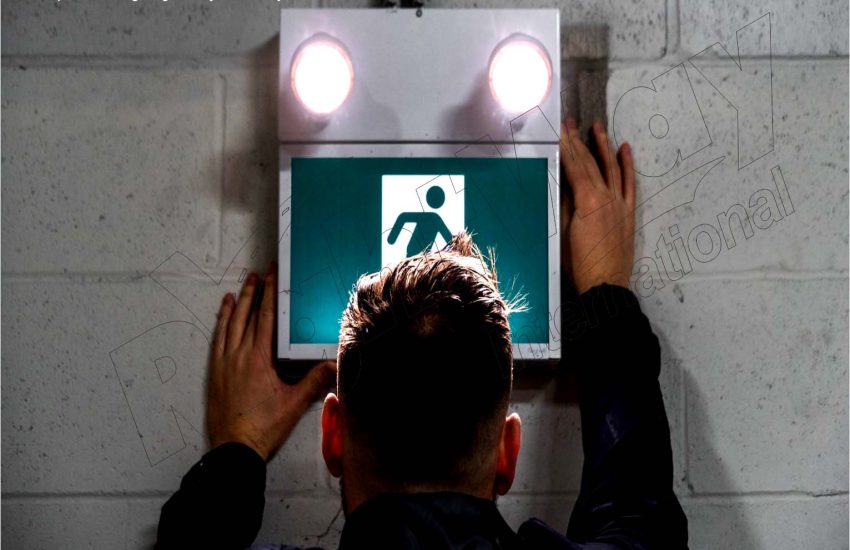Emergency Lighting Maintenance Emergency lighting is a critical component of safety infrastructure in buildings, providing illumination during power outages, fires, or other emergencies. Properly functioning emergency lighting systems are essential for guiding occupants to safety and ensuring compliance with safety regulations. Regular maintenance of emergency lighting is crucial to ensure these systems perform effectively when needed. Here’s an in-depth look at why emergency lighting maintenance is vital and what it involves.
Why Emergency Lighting Maintenance is Crucial
**1. Ensuring Safety During Emergencies
The primary purpose of emergency lighting is to provide clear, reliable illumination during emergencies when the main power supply is interrupted. This lighting helps occupants find their way to exits, navigate safely through darkened areas, and avoid potential hazards. Regular maintenance ensures that emergency lights are operational and can perform their intended function, thereby reducing the risk of accidents and injuries during an emergency.
**2. Compliance with Regulations and Standards
Emergency lighting systems are subject to various regulations and standards, including those set by local building codes, fire safety regulations, and industry standards such as those outlined by the National Fire Protection Association (NFPA) or the International Building Code (IBC). Regular maintenance and testing are required to comply with these regulations. Non-compliance can result in penalties, legal liabilities, and increased risks during emergencies.
**3. Preventing System Failures
Emergency lighting systems can fail due to a variety of reasons, including battery depletion, electrical faults, or damage to the fixtures. Regular maintenance helps identify and address potential issues before they lead to system failures. By performing routine checks, technicians can replace worn-out batteries, fix electrical faults, and ensure that all components are in good working order, thereby preventing unexpected failures during emergencies.
**4. Enhancing System Efficiency
Well-maintained emergency lighting systems operate more efficiently. Regular maintenance allows for the cleaning of fixtures, adjustment of light levels, and verification of power sources, which helps optimize the performance of the system. Efficient systems provide better illumination, which is crucial for safe evacuation during an emergency.
**5. Extending the Lifespan of Equipment
Routine maintenance helps extend the lifespan of emergency lighting equipment. By addressing issues such as battery degradation, electrical faults, and physical damage promptly, you can reduce the wear and tear on the system and avoid costly replacements. Proper maintenance ensures that equipment remains in good condition and functions reliably over time.
What Emergency Lighting Maintenance Involves
**1. Visual Inspections
The first step in emergency lighting maintenance is a visual inspection of all components, including light fixtures, battery packs, and control panels. Technicians check for any signs of physical damage, such as cracked lenses, broken housings, or loose connections. They also verify that fixtures are securely mounted and that there are no obstructions blocking the light output.
**2. Battery Testing and Replacement
Batteries are a critical component of emergency lighting systems, providing backup power during outages. Regular testing of batteries is essential to ensure they are holding a charge and functioning properly. Technicians perform load tests to assess the battery’s capacity and replace any batteries that are nearing the end of their service life. Battery replacement is typically recommended every 2-3 years, depending on the type and usage of the battery.
**3. Electrical Testing
Electrical testing involves checking the integrity of the wiring and connections within the emergency lighting system. Technicians use specialized equipment to measure voltage, current, and continuity, ensuring that the electrical components are operating correctly. They also inspect the control panels and switches for any signs of malfunction or wear.
**4. Fixture Cleaning and Adjustment
Emergency lighting fixtures can accumulate dust and debris over time, which can reduce their effectiveness. Regular cleaning of fixtures is necessary to maintain optimal light output. Additionally, technicians adjust the angle and position of fixtures to ensure that the light is distributed effectively and that all areas requiring illumination are adequately covered.
**5. Functional Testing
Functional testing involves simulating power outages to verify that the emergency lighting system activates correctly and provides adequate illumination. Technicians test each light fixture individually and ensure that the system operates according to the manufacturer’s specifications and regulatory requirements. This testing also includes checking the duration of illumination to ensure it meets the required standards.
**6. Documentation and Reporting
Maintaining accurate records of emergency lighting maintenance is essential for compliance and operational purposes. Technicians document all inspections, tests, repairs, and replacements performed during maintenance visits. Detailed reports are generated to track the system’s performance and identify any recurring issues that may need further attention.
**7. System Upgrades and Improvements
Based on the findings from maintenance and testing, technicians may recommend upgrades or improvements to the emergency lighting system. This could include replacing outdated fixtures, installing new technology, or enhancing the system’s coverage. Upgrades ensure that the system remains effective and compliant with current standards.
Conclusion
Emergency lighting maintenance is a critical aspect of building safety and regulatory compliance. Regular inspections, testing, and maintenance ensure that emergency lighting systems perform reliably during power outages and other emergencies. By investing in routine maintenance, you enhance safety, prevent system failures, extend the lifespan of equipment, and ensure compliance with regulations. Prioritizing emergency lighting maintenance not only safeguards occupants but also demonstrates a commitment to maintaining a safe and compliant environment.


